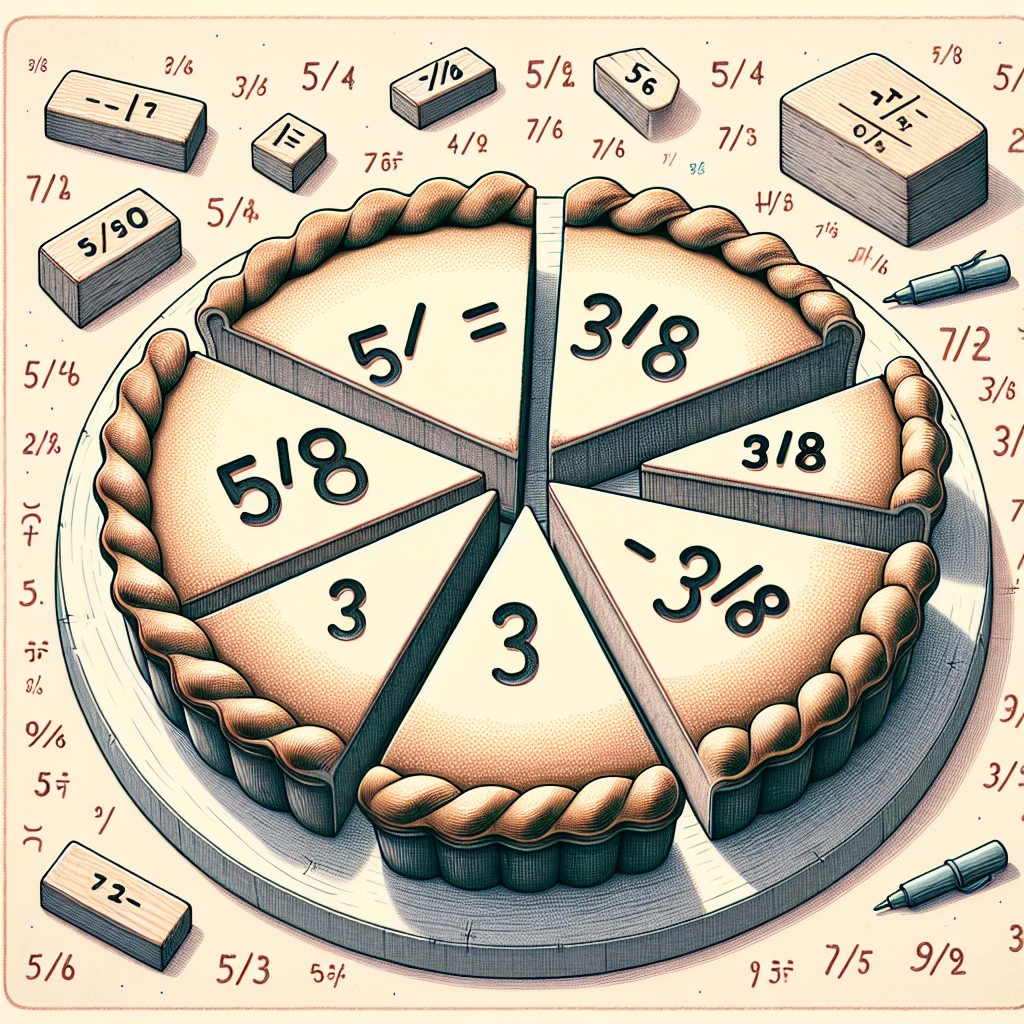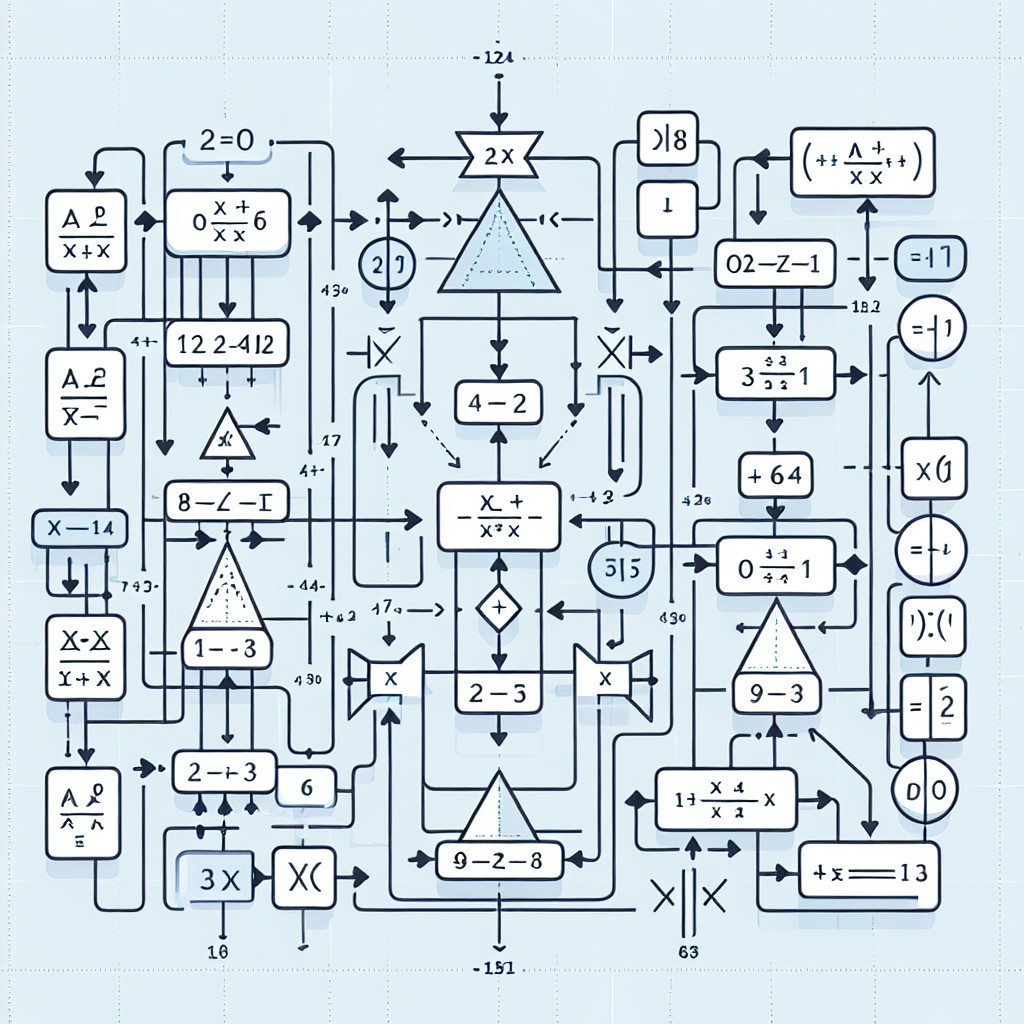Understanding fractions is an essential skill in mathematics. Fractions are used in various real-world situations, such as cooking, measuring, and budgeting. Being able to compare fractions is particularly important as it allows us to determine which fraction is larger or smaller. In this article, we will explore the basics of fractions, different methods for comparing fractions, and real-world applications of comparing fractions.
Summary
- Fractions represent parts of a whole or a group.
- When comparing fractions with the same denominator, the larger fraction is the one with the greater numerator.
- When comparing fractions with the same numerator, the larger fraction is the one with the smaller denominator.
- To compare fractions with different denominators, find a common denominator and convert the fractions to that denominator.
- Equivalent fractions have the same value and can be used to compare fractions.
Understanding the Basics of Fractions
A fraction is a way of representing a part of a whole. It consists of two parts: the numerator and the denominator. The numerator represents the number of parts we have, while the denominator represents the total number of equal parts that make up a whole. For example, in the fraction 3/4, 3 is the numerator and 4 is the denominator.
Fractions can be represented visually using a fraction bar or a pie chart. The numerator is written above the fraction bar, and the denominator is written below it. For example, 3/4 can be represented as three parts out of four equal parts.
Comparing Fractions with the Same Denominator
When comparing fractions with the same denominator, we can simply compare their numerators. The fraction with the larger numerator is greater than the fraction with the smaller numerator. For example, when comparing 2/5 and 3/5, we can see that 3/5 is greater than 2/5 because 3 is greater than 2.
To compare fractions with the same denominator, we can also convert them into decimals or use a number line. Converting fractions into decimals involves dividing the numerator by the denominator. For example, 2/5 can be converted to 0.4 and 3/5 can be converted to 0.6. By comparing these decimals, we can determine that 3/5 is greater than 2/5.
Comparing Fractions with the Same Numerator
When comparing fractions with the same numerator, we can simply compare their denominators. The fraction with the smaller denominator is greater than the fraction with the larger denominator. For example, when comparing 2/3 and 2/5, we can see that 2/5 is greater than 2/3 because 5 is smaller than 3.
To compare fractions with the same numerator, we can also convert them into decimals or use a number line. Converting fractions into decimals involves dividing the numerator by the denominator. For example, 2/3 can be converted to approximately 0.67 and 2/5 can be converted to 0.4. By comparing these decimals, we can determine that 2/3 is greater than 2/5.
Comparing Fractions with Different Denominators
When comparing fractions with different denominators, it is necessary to find a common denominator. A common denominator is a multiple of both denominators. Once we have a common denominator, we can compare the numerators.
To find a common denominator, we can use the least common multiple (LCM) of the denominators. The LCM is the smallest number that is divisible by both denominators. For example, when comparing 1/4 and 1/3, the LCM of 4 and 3 is 12. We can convert both fractions to have a denominator of 12 by multiplying the numerator and denominator by a suitable number. In this case, we multiply 1/4 by 3/3 to get 3/12 and multiply 1/3 by 4/4 to get 4/12. Now that both fractions have the same denominator, we can compare their numerators and determine that 4/12 is greater than 3/12.
Converting Fractions to the Same Denominator
Converting fractions to the same denominator can make it easier to compare them. By having the same denominator, we can simply compare the numerators to determine which fraction is greater or smaller.
To convert fractions to the same denominator, we can use the method mentioned in the previous section. We find the LCM of the denominators and multiply each fraction by a suitable number to have the same denominator. For example, when comparing 2/5 and 3/7, the LCM of 5 and 7 is 35. We can convert 2/5 to have a denominator of 35 by multiplying the numerator and denominator by 7/7, resulting in 14/35. Similarly, we can convert 3/7 to have a denominator of 35 by multiplying the numerator and denominator by 5/5, resulting in 15/35. Now that both fractions have the same denominator, we can compare their numerators and determine that 15/35 is greater than 14/35.
Using Equivalent Fractions to Compare
Equivalent fractions are fractions that represent the same value but have different numerators and denominators. We can use equivalent fractions to compare fractions by finding a common numerator or a common denominator.
To find equivalent fractions with a common numerator, we can multiply both the numerator and denominator of each fraction by the same number. For example, when comparing 1/2 and 3/4, we can find an equivalent fraction with a common numerator of 8 by multiplying both fractions by 4. This gives us 4/8 and 6/8. Now that both fractions have the same numerator, we can compare their denominators and determine that 6/8 is greater than 4/8.
To find equivalent fractions with a common denominator, we can multiply both the numerator and denominator of each fraction by the same number. For example, when comparing 1/3 and 2/5, we can find an equivalent fraction with a common denominator of 15 by multiplying both fractions by 5. This gives us 5/15 and 6/15. Now that both fractions have the same denominator, we can compare their numerators and determine that 6/15 is greater than 5/15.
Finding the Lowest Common Denominator
The lowest common denominator (LCD) is the smallest number that is divisible by all the denominators in a set of fractions. Finding the LCD is useful when comparing fractions with different denominators or when converting fractions to the same denominator.
To find the LCD, we can list the multiples of each denominator and find the smallest number that appears in all the lists. For example, when finding the LCD of 2, 3, and 4, we can list the multiples as follows:
Multiples of 2: 2, 4, 6, 8, …
Multiples of 3: 3, 6, 9, …
Multiples of 4: 4, 8, …
From these lists, we can see that the smallest number that appears in all three lists is 6. Therefore, the LCD of 2, 3, and 4 is 6.
Simplifying Fractions to Compare
Simplifying fractions involves reducing them to their simplest form by dividing both the numerator and denominator by their greatest common divisor (GCD). Simplifying fractions can make it easier to compare them as they are in their most simplified form.
To simplify a fraction, we can find the GCD of the numerator and denominator and divide both by this number. For example, when simplifying 4/8, we can find that the GCD of 4 and 8 is 4. By dividing both the numerator and denominator by 4, we get 1/2. Now that the fraction is simplified, we can easily compare it to other fractions.
Comparing Mixed Numbers
A mixed number is a combination of a whole number and a fraction. When comparing mixed numbers, we can convert them into improper fractions and then compare them using the methods mentioned earlier.
To convert a mixed number to an improper fraction, we multiply the whole number by the denominator and add the numerator. The result becomes the new numerator, and the denominator remains the same. For example, when converting 2 1/3 to an improper fraction, we multiply 2 by 3 and add 1 to get 7. The new numerator is 7, and the denominator is 3. Therefore, 2 1/3 can be written as 7/3.
Once the mixed numbers are converted to improper fractions, we can compare them using the methods mentioned earlier. For example, when comparing 2 1/3 and 1 2/5, we convert both to improper fractions: 2 1/3 becomes 7/3 and 1 2/5 becomes 7/5. Now that both fractions have the same denominator, we can compare their numerators and determine that 7/3 is greater than 7/5.
Real-World Applications of Comparing Fractions
Understanding how to compare fractions is important in various real-world situations. For example, when cooking or baking, we often need to adjust recipes based on the number of servings required. Being able to compare fractions allows us to determine how much of each ingredient is needed.
In addition, comparing fractions is useful when measuring objects or quantities. For instance, if we need to measure a length using a ruler with fractional markings, we can compare different fractions to determine the exact measurement.
Furthermore, understanding how to compare fractions is crucial in budgeting and financial planning. When managing finances, we often need to compare different expenses or income sources to make informed decisions.
In conclusion, understanding fractions and how to compare them is an essential skill in mathematics. By understanding the basics of fractions, different methods for comparing fractions, and real-world applications of comparing fractions, we can develop a strong foundation in this area of mathematics. It is important to practice comparing fractions regularly to improve our skills and apply them in various real-life situations.
FAQs
What are fractions?
Fractions are a way of representing a part of a whole. They consist of a numerator (the top number) and a denominator (the bottom number), separated by a line.
How do you compare fractions?
To compare fractions, you need to find a common denominator. Once you have a common denominator, you can compare the numerators to determine which fraction is larger.
What is a common denominator?
A common denominator is a number that can be divided evenly by the denominators of two or more fractions. It allows you to compare fractions by making their denominators the same.
What is the simplest form of a fraction?
The simplest form of a fraction is when the numerator and denominator have no common factors other than 1. This means that the fraction cannot be simplified any further.
What is an improper fraction?
An improper fraction is a fraction where the numerator is larger than the denominator. For example, 7/4 is an improper fraction.
What is a mixed number?
A mixed number is a combination of a whole number and a fraction. For example, 3 1/2 is a mixed number.
How do you convert a mixed number to an improper fraction?
To convert a mixed number to an improper fraction, you multiply the whole number by the denominator of the fraction, then add the numerator. The result becomes the new numerator, and the denominator stays the same.

